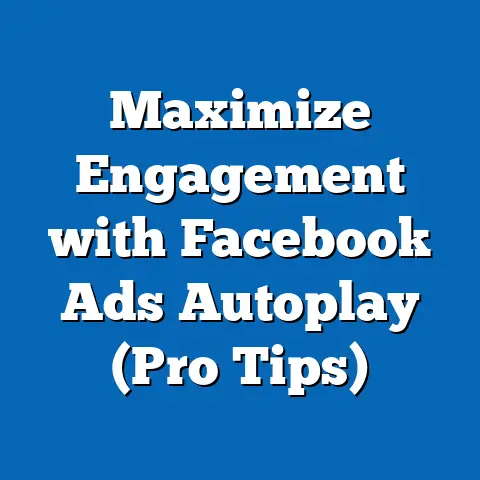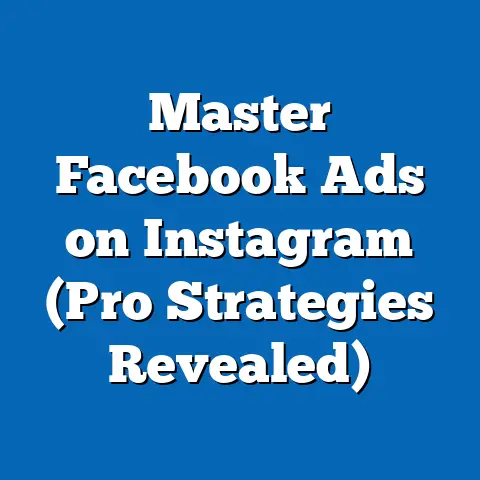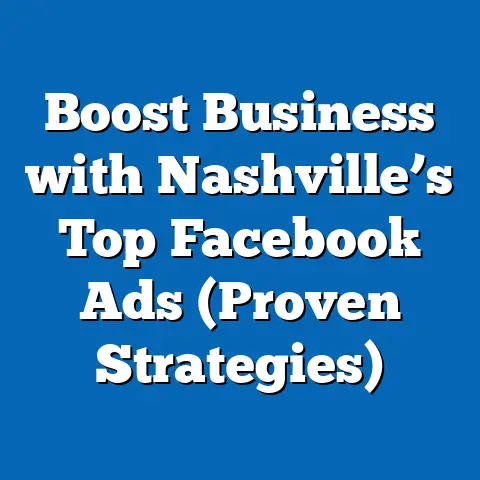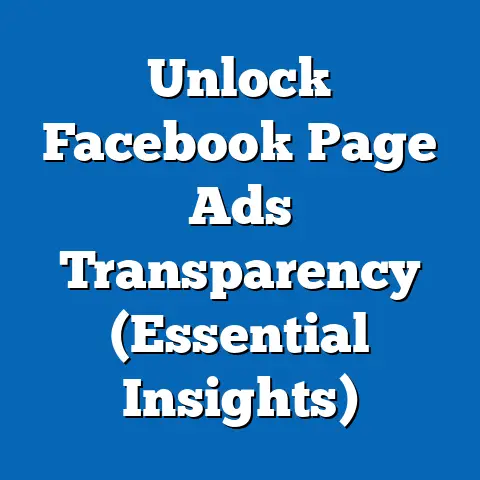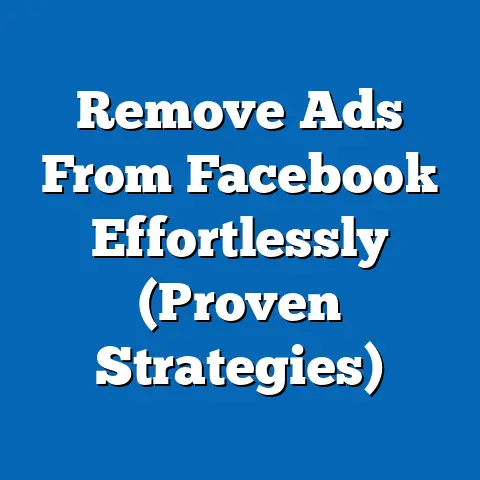Maximize GHL Facebook Ads for Success (Proven Strategies)
Let’s face it, life moves fast. As entrepreneurs and small business owners, we’re constantly juggling a million different tasks, from product development and customer service to managing finances and everything in between. Marketing and advertising can often feel like just another overwhelming item on an already overflowing to-do list. Standing out in today’s crowded marketplace can feel like shouting into a hurricane.
But what if I told you that there’s a way to cut through the noise, reach your ideal customers efficiently, and actually enjoy the process? That’s where Facebook Ads, and more specifically, managing them through Go High Level (GHL), comes in. Facebook Ads, when done right, can be a game-changer, allowing you to target specific demographics, interests, and behaviors with laser precision. And GHL? It’s the innovative platform that can simplify the entire process, making it manageable and even…dare I say…enjoyable.
I know, I know. “Another marketing tool? Another platform to learn?” I get it. I’ve been there. I’ve felt the overwhelm of trying to keep up with the ever-changing digital landscape. But trust me on this one. GHL, combined with a solid Facebook Ads strategy, can be a real game-changer.
In this guide, I’m going to walk you through proven strategies that can lead to successful Facebook ad campaigns, even if you’re juggling a million other things. I’ll share my own experiences, insights, and practical tips that you can implement right away. We’ll cover everything from setting up your GHL account and defining your target audience to crafting compelling ad copy and optimizing your campaigns for maximum ROI.
So, buckle up, grab a cup of coffee (or tea, if that’s your thing), and let’s dive into the world of GHL and Facebook Ads. It’s time to take control of your marketing, reach your ideal customers, and achieve the success you deserve.
What exactly is GHL, and why should you even care?Go High Level (GHL) is more than just another marketing tool; it’s a comprehensive platform designed for agencies and marketers who want to streamline their operations and deliver exceptional results. Think of it as an all-in-one marketing command center, bringing together all the essential tools you need under one roof.
Overview of GHL
GHL boasts a powerful suite of features, including:
- CRM (Customer Relationship Management): Manage your leads and customers effectively with GHL’s built-in CRM. Track interactions, segment your audience, and personalize your communication.
- Funnel Building: Create high-converting sales funnels with GHL’s drag-and-drop builder. Design landing pages, opt-in forms, and thank you pages with ease.
- Email Marketing: Automate your email marketing campaigns with GHL’s email marketing tools. Send newsletters, follow-up sequences, and personalized messages to nurture your leads.
- SMS Marketing: Reach your audience directly with SMS marketing. Send text messages for reminders, promotions, and updates.
- Website Builder: Build professional websites with GHL’s website builder. No coding required!
- Automation: Automate repetitive tasks with GHL’s automation features. Set up triggers, workflows, and actions to save time and improve efficiency.
- Facebook Ads Integration: Seamlessly integrate your Facebook Ads account with GHL to manage your campaigns, track performance, and optimize your results.
Benefits of Using GHL for Facebook Ads
Now, let’s get to the heart of the matter: how does GHL make managing Facebook Ads easier and more effective?
- Streamlined Campaign Management: GHL centralizes all your Facebook Ads management tasks in one place. No more switching between different platforms and tabs!
- Time-Saving Automation: Automate your ad creation, targeting, and optimization processes with GHL’s automation features. Save time and focus on other important aspects of your business.
- Improved Targeting: Leverage GHL’s CRM data and audience segmentation tools to create highly targeted Facebook Ads campaigns. Reach the right people with the right message at the right time.
- Enhanced Tracking and Reporting: Track your ad performance in real-time with GHL’s comprehensive reporting dashboards. Get insights into your key metrics and identify areas for improvement.
- Simplified A/B Testing: Conduct A/B tests with ease using GHL’s built-in testing tools. Optimize your ad copy, visuals, and targeting to maximize your results.
- Lead Capture and Nurturing: Capture leads directly from your Facebook Ads with GHL’s lead capture forms. Nurture your leads with automated email and SMS sequences to convert them into paying customers.
- Increased ROI: By streamlining your Facebook Ads management, improving your targeting, and optimizing your campaigns, GHL can help you increase your ROI and drive more revenue for your business.
I remember when I first started using GHL for my Facebook Ads, I was blown away by how much time it saved me. I used to spend hours switching between Facebook Ads Manager, my CRM, and my email marketing platform. With GHL, everything was in one place, making it so much easier to manage my campaigns and track my results.
Real-Life Examples
But don’t just take my word for it. Here are a few real-life examples of businesses that have seen success using GHL for their Facebook advertising efforts:
- A Local Restaurant: A local restaurant used GHL to create a targeted Facebook Ads campaign promoting their new menu. They used GHL’s CRM data to target customers who had previously dined at their restaurant and offered them a special discount. The campaign resulted in a 30% increase in sales.
- An E-commerce Store: An e-commerce store used GHL to create a retargeting campaign on Facebook targeting customers who had abandoned their shopping carts. They offered these customers a free shipping discount to encourage them to complete their purchase. The campaign resulted in a 15% increase in sales.
- A Real Estate Agent: A real estate agent used GHL to create a lead generation campaign on Facebook targeting potential homebuyers in their local area. They used GHL’s lead capture forms to collect leads and then nurtured these leads with automated email sequences. The campaign resulted in a significant increase in qualified leads.
These are just a few examples of the many businesses that have seen success using GHL for their Facebook advertising efforts. With its powerful features, streamlined management, and time-saving automation, GHL can help you take your Facebook Ads to the next level.
Key Takeaways:
- GHL is an all-in-one marketing platform designed for agencies and marketers.
- It offers a comprehensive suite of features, including CRM, funnel building, email marketing, SMS marketing, website builder, automation, and Facebook Ads integration.
- GHL streamlines Facebook Ads management, saves time, improves targeting, enhances tracking and reporting, simplifies A/B testing, and increases ROI.
Next Steps:
- Explore GHL’s website and learn more about its features and benefits.
- Sign up for a free trial and experience the platform for yourself.
- Consider how GHL can help you streamline your Facebook Ads management and improve your results.
Setting Up Your GHL Facebook Ads Campaign
Now that you understand the power of GHL and its benefits for Facebook Ads, let’s dive into the practical steps of setting up your first campaign. Don’t worry, I’ll walk you through everything step-by-step.
Creating Your GHL Account
- Visit GHL’s Website: Go to the Go High Level website and click on the “Start Free Trial” button.
- Choose Your Plan: Select the plan that best fits your needs and budget. GHL offers different plans based on the number of users, features, and integrations.
- Fill Out the Registration Form: Enter your personal information, including your name, email address, and password.
- Verify Your Email Address: Check your email inbox for a verification email from GHL. Click on the verification link to activate your account.
- Log In to Your GHL Account: Once your account is activated, log in to your GHL dashboard using your email address and password.
Linking Your Facebook Account
- Navigate to Integrations: In your GHL dashboard, go to “Settings” and then click on “Integrations.”
- Connect Your Facebook Account: Find the Facebook integration and click on the “Connect” button.
- Authorize GHL to Access Your Facebook Account: You’ll be redirected to Facebook, where you’ll be asked to authorize GHL to access your account. Make sure to grant all the necessary permissions.
- Select Your Facebook Business Page: Once you’ve authorized GHL, you’ll be asked to select the Facebook Business Page that you want to connect to your GHL account.
- Save Your Settings: After selecting your Facebook Business Page, save your settings to complete the integration process.
Defining Your Target Audience
One of the most critical aspects of a successful Facebook Ads campaign is defining your target audience. You need to know who you’re trying to reach and what their interests, behaviors, and demographics are.
- Identify Your Ideal Customer: Start by creating a detailed profile of your ideal customer. Consider their age, gender, location, interests, education, income, and other relevant factors.
- Use GHL’s Audience Segmentation Tools: GHL provides a variety of audience segmentation tools that can help you refine your targeting. You can segment your audience based on:
- Demographics: Age, gender, location, education, income, etc.
- Interests: Hobbies, passions, and activities.
- Behaviors: Online activities, purchase history, and engagement with your brand.
- Custom Audiences: Upload your own customer data to create custom audiences.
- Lookalike Audiences: Create lookalike audiences based on your existing customers to reach new people who are similar to your best customers.
- Experiment with Different Targeting Options: Don’t be afraid to experiment with different targeting options to see what works best for your business. Track your results and adjust your targeting accordingly.
- Demographics: Age, gender, location, education, income, etc.
- Interests: Hobbies, passions, and activities.
- Behaviors: Online activities, purchase history, and engagement with your brand.
- Custom Audiences: Upload your own customer data to create custom audiences.
- Lookalike Audiences: Create lookalike audiences based on your existing customers to reach new people who are similar to your best customers.
Crafting Compelling Ad Copy
Your ad copy is what will grab your target audience’s attention and persuade them to take action. Here are a few tips for writing compelling ad copy:
- Know Your Audience: Write your ad copy in a language that resonates with your target audience. Use their vocabulary and address their specific needs and pain points.
- Highlight the Benefits: Focus on the benefits of your product or service, rather than just the features. Explain how your product or service can solve your target audience’s problems and improve their lives.
- Use Strong Headlines: Your headline is the first thing people will see, so make sure it’s attention-grabbing and relevant to your target audience.
- Write Clear and Concise Copy: Keep your ad copy short and to the point. Use clear and concise language that’s easy to understand.
- Include a Call to Action: Tell people what you want them to do. Use a strong call to action that encourages them to click on your ad, visit your website, or make a purchase.
Selecting the Right Ad Format
Facebook offers a variety of ad formats, each with its own unique strengths and weaknesses. Here are a few of the most popular ad formats:
- Image Ads: Simple and effective, image ads are a great way to showcase your product or service with a visually appealing image.
- Video Ads: Engaging and informative, video ads are a great way to tell your brand story and connect with your audience on a deeper level.
- Carousel Ads: Showcase multiple products or services in a single ad with carousel ads. Each card in the carousel can have its own image, headline, and description.
- Collection Ads: Designed for e-commerce businesses, collection ads allow you to showcase your products in a visually appealing and interactive way.
- Lead Ads: Capture leads directly from your Facebook Ads with lead ads. Lead ads are optimized for mobile and make it easy for people to submit their information without leaving Facebook.
The best ad format for your business will depend on your specific goals and target audience. Experiment with different ad formats to see what works best for you.
Key Takeaways:
- Setting up your GHL account and linking your Facebook account is a straightforward process.
- Defining your target audience is crucial for a successful Facebook Ads campaign.
- Crafting compelling ad copy and selecting the right ad format can significantly impact your results.
Next Steps:
- Create your GHL account and link your Facebook account.
- Define your target audience based on your ideal customer profile.
- Write compelling ad copy that highlights the benefits of your product or service.
- Select the right ad format for your business and campaign goals.
Ad Design and Creative Strategies
Now that you’ve got the foundational elements in place – your GHL account, your Facebook connection, your target audience, and your ad copy – let’s talk about making your ads visually appealing and engaging. After all, even the most compelling copy will fall flat if it’s paired with a lackluster visual.
Visual Elements
In the world of Facebook advertising, visuals are king (or queen!). Think about it: people are scrolling through their feeds at lightning speed, bombarded with information. Your ad has mere seconds to capture their attention. That’s where high-quality visuals come in.
- High-Quality Images: Invest in professional-looking images that are well-lit, in focus, and relevant to your product or service. Avoid using blurry or pixelated images.
- Eye-Catching Videos: Video ads are incredibly engaging and can be a great way to tell your brand story or showcase your product in action. Keep your videos short, sweet, and visually appealing.
- Brand Consistency: Make sure your visuals align with your brand’s overall aesthetic. Use consistent colors, fonts, and imagery to create a cohesive brand experience.
- Relevance: Your visuals should be relevant to your ad copy and your target audience. Use images or videos that will resonate with them and capture their attention.
I’ve seen firsthand how much of a difference high-quality visuals can make. I once ran two identical ad campaigns, one with a stock photo and one with a professionally shot photo of the product. The campaign with the professional photo had a click-through rate that was almost double the campaign with the stock photo!
A/B Testing
A/B testing, also known as split testing, is the process of comparing two versions of your ad to see which one performs better. GHL makes A/B testing incredibly easy, allowing you to test different elements of your ad, such as:
- Headlines: Test different headlines to see which one grabs the most attention.
- Images: Test different images or videos to see which one resonates best with your target audience.
- Ad Copy: Test different ad copy to see which one generates the most clicks and conversions.
- Calls to Action: Test different calls to action to see which one encourages people to take the desired action.
- Targeting: Test different targeting options to see which audience segments are most responsive to your ads.
When I’m running A/B tests, I always make sure to only test one element at a time. This allows me to isolate the impact of each element and determine which one is driving the results.
Utilizing Facebook Pixel with GHL
The Facebook Pixel is a small piece of code that you place on your website to track user behavior. It allows you to:
- Track Conversions: See which of your Facebook Ads are driving the most conversions on your website.
- Retarget Website Visitors: Show ads to people who have visited your website but haven’t yet made a purchase.
- Optimize Your Ads: Use the data from the Facebook Pixel to optimize your ads for better performance.
- Create Lookalike Audiences: Create lookalike audiences based on your website visitors to reach new people who are similar to your existing customers.
Setting up the Facebook Pixel with GHL is a breeze. GHL provides a simple interface for adding the Pixel code to your website.
Creating a Compelling Call-to-Action
Your call to action (CTA) is the final nudge that encourages people to take the desired action. A strong CTA should be:
- Clear and Concise: Tell people exactly what you want them to do.
- Action-Oriented: Use verbs that encourage action, such as “Shop Now,” “Learn More,” “Sign Up,” or “Get Started.”
- Urgent: Create a sense of urgency to encourage people to take action now. Use phrases like “Limited Time Offer” or “Shop Now Before It’s Too Late.”
- Relevant: Your CTA should be relevant to your ad copy and your target audience.
I always like to test different CTAs to see which one performs best. Sometimes, a simple change in wording can make a big difference in your conversion rate.
Key Takeaways:
- High-quality visuals are essential for capturing attention and engaging your target audience.
- A/B testing allows you to optimize your ads for better performance.
- The Facebook Pixel allows you to track user behavior and retarget website visitors.
- A compelling call to action encourages people to take the desired action.
Next Steps:
- Invest in high-quality visuals that align with your brand and resonate with your target audience.
- Start A/B testing different elements of your ads to optimize for better performance.
- Set up the Facebook Pixel on your website to track user behavior and retarget website visitors.
- Craft compelling calls to action that encourage people to take the desired action.
Optimizing Your Campaign for Better Results
You’ve launched your Facebook Ads campaign through GHL. Great! But the work doesn’t stop there. In fact, it’s just beginning. To truly maximize your ROI, you need to continuously monitor, analyze, and optimize your campaign.
Monitoring Performance Metrics
GHL provides a wealth of data and analytics that can help you track your campaign’s performance. Here are some of the key performance indicators (KPIs) you should be monitoring:
- Click-Through Rate (CTR): The percentage of people who see your ad and click on it. A high CTR indicates that your ad is relevant and engaging to your target audience.
- Conversion Rate: The percentage of people who click on your ad and then complete the desired action on your website (e.g., make a purchase, sign up for a newsletter, fill out a form). A high conversion rate indicates that your landing page is effective and your offer is compelling.
- Cost Per Acquisition (CPA): The cost of acquiring a new customer through your Facebook Ads campaign. A low CPA indicates that your campaign is efficient and cost-effective.
- Reach: The number of unique people who saw your ad.
- Impressions: The number of times your ad was displayed.
- Frequency: The average number of times each person saw your ad.
- Return on Ad Spend (ROAS): The revenue generated for every dollar spent on your Facebook Ads campaign.
GHL’s reporting dashboards make it easy to track these metrics in real-time. Pay close attention to these numbers and look for trends and patterns.
Adjusting Budgets and Bids
Managing your ad spend effectively is crucial for maximizing your ROI. GHL provides budgeting tools that allow you to:
- Set Daily or Lifetime Budgets: Control how much you spend on your campaign each day or over its entire duration.
- Adjust Bids: Determine how much you’re willing to pay for each click or impression.
There are two main bidding strategies you can use:
- Manual Bidding: You set your bids manually, giving you more control over your ad spend.
- Automatic Bidding: Facebook automatically sets your bids based on your campaign goals and budget.
I typically recommend starting with automatic bidding and then switching to manual bidding once you have enough data to make informed decisions.
Retargeting Strategies
Retargeting is the process of showing ads to people who have previously interacted with your website or brand. It’s an incredibly effective way to re-engage potential customers and drive conversions.
Here are a few retargeting strategies you can implement through GHL:
- Website Visitors: Show ads to people who have visited your website but haven’t yet made a purchase.
- Abandoned Cart Visitors: Show ads to people who have added items to their shopping cart but haven’t completed their purchase.
- Lead Form Visitors: Show ads to people who have filled out your lead form but haven’t yet become customers.
- Video Viewers: Show ads to people who have watched a certain percentage of your video ads.
Retargeting campaigns are often more effective than traditional campaigns because you’re targeting people who are already familiar with your brand and have shown some level of interest in your products or services.
Ad Frequency Management
Ad frequency is the average number of times each person sees your ad. While it’s important to show your ads frequently enough to make an impact, you also don’t want to bombard people with too many ads, which can lead to ad fatigue and negative brand perception.
Here are a few best practices for managing ad frequency:
- Monitor Your Frequency: Keep an eye on your ad frequency in GHL’s reporting dashboards.
- Set Frequency Caps: Limit the number of times each person sees your ad per day or week.
- Rotate Your Ads: Change your ad creative regularly to keep your ads fresh and engaging.
- Segment Your Audience: Target different audience segments with different ads to avoid ad fatigue.
I’ve found that a frequency of 3-5 times per week is generally a good starting point, but it can vary depending on your industry and target audience.
Key Takeaways:
- Monitoring your performance metrics is crucial for identifying areas for improvement.
- Adjusting your budgets and bids can help you optimize your ad spend and maximize your ROI.
- Retargeting is an incredibly effective way to re-engage potential customers and drive conversions.
- Managing your ad frequency is important for avoiding ad fatigue and maintaining audience interest.
Next Steps:
- Regularly monitor your performance metrics in GHL’s reporting dashboards.
- Adjust your budgets and bids based on your performance data.
- Implement retargeting strategies to re-engage potential customers.
- Manage your ad frequency to avoid ad fatigue and maintain audience interest.
Case Studies and Success Stories
Theory is great, but seeing real-world results is even better. Let’s dive into some case studies of businesses that have successfully utilized GHL for their Facebook Ads campaigns.
Case Study 1: Local Gym Achieves Membership Growth with Targeted Ads
- Goal: Increase new gym memberships within a 5-mile radius.
- Strategy Implemented: The gym used GHL to create a highly targeted Facebook Ads campaign focused on local residents interested in fitness, weight loss, and healthy living. They created different ad sets targeting specific demographics (e.g., young professionals, parents, retirees) with tailored messaging. They also used lead ads to capture contact information and offer a free trial.
- Results Achieved:
- A 40% increase in new gym memberships within the target radius.
- A 25% reduction in cost per lead compared to previous advertising efforts.
- A significant boost in brand awareness within the local community.
- Key Takeaways: Hyper-local targeting, tailored messaging, and lead ads were key to the gym’s success. GHL’s audience segmentation tools allowed them to reach the right people with the right message.
- A 40% increase in new gym memberships within the target radius.
- A 25% reduction in cost per lead compared to previous advertising efforts.
- A significant boost in brand awareness within the local community.
Case Study 2: E-commerce Store Boosts Sales with Retargeting Campaigns
- Goal: Increase sales of a specific product line.
- Strategy Implemented: The e-commerce store used GHL to create retargeting campaigns on Facebook targeting customers who had viewed the product line on their website but hadn’t made a purchase. They offered these customers a special discount and free shipping to encourage them to complete their purchase.
- Results Achieved:
- A 20% increase in sales of the targeted product line.
- A 15% reduction in abandoned carts.
- A significant increase in customer lifetime value.
- Key Takeaways: Retargeting is a powerful tool for re-engaging potential customers and driving conversions. Offering a special discount or free shipping can be a great way to incentivize purchases.
- A 20% increase in sales of the targeted product line.
- A 15% reduction in abandoned carts.
- A significant increase in customer lifetime value.
Case Study 3: SaaS Company Generates High-Quality Leads with Lead Generation Ads
- Goal: Generate qualified leads for their SaaS product.
- Strategy Implemented: The SaaS company used GHL to create lead generation ads on Facebook targeting professionals in their industry. They offered a free ebook in exchange for contact information. They then used GHL’s email marketing tools to nurture these leads with automated email sequences.
- Results Achieved:
- A 30% increase in qualified leads.
- A 20% reduction in cost per lead.
- A significant improvement in lead-to-customer conversion rate.
- Key Takeaways: Offering a valuable free resource in exchange for contact information is a great way to generate high-quality leads. Nurturing these leads with automated email sequences can help convert them into paying customers.
- A 30% increase in qualified leads.
- A 20% reduction in cost per lead.
- A significant improvement in lead-to-customer conversion rate.
Lessons Learned
These case studies highlight a few common threads:
- Targeting is Key: Successful Facebook Ads campaigns are built on a foundation of accurate and effective targeting.
- Relevance Matters: Your ads should be relevant to your target audience and their interests.
- Value is Essential: Offer value to your target audience, whether it’s a discount, a free resource, or helpful information.
- Automation Saves Time: GHL’s automation features can help you streamline your campaigns and save time.
- Tracking and Optimization are Ongoing: Continuously monitor your performance and optimize your campaigns for better results.
Key Takeaways:
- These case studies demonstrate the power of GHL and Facebook Ads to achieve a variety of business goals.
- Targeting, relevance, value, automation, and optimization are key to success.
Next Steps:
I truly believe that GHL and Facebook Ads have the potential to transform your marketing efforts and drive significant results for your business. But remember, success doesn’t happen overnight. It takes time, effort, and a willingness to experiment and learn.
Don’t be afraid to try new things, test different strategies, and track your results. The digital marketing landscape is constantly evolving, so it’s important to stay up-to-date on the latest trends and best practices.
And most importantly, don’t give up! There will be times when your campaigns don’t perform as well as you’d like. But don’t let that discourage you. Use those experiences as opportunities to learn and improve.
With the right tools, techniques, and mindset, success is within reach. So, take action on the strategies we’ve discussed, embrace the power of GHL and Facebook Ads, and watch your business grow. I’m rooting for you!
Key Takeaways:
- GHL and Facebook Ads have the potential to transform your marketing efforts.
- Success takes time, effort, and a willingness to experiment and learn.
- Don’t be afraid to try new things and track your results.
- Continuous learning and adaptation are essential in the ever-evolving digital marketing landscape.
Next Steps:
- Review the key takeaways from this guide.
- Identify the strategies that are most relevant to your business.
- Create a plan for implementing these strategies.
- Start taking action and track your results.
- Never stop learning and adapting!

